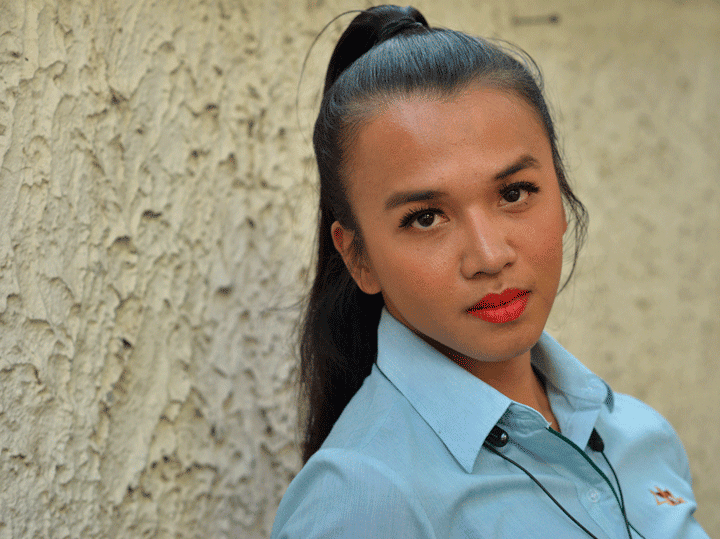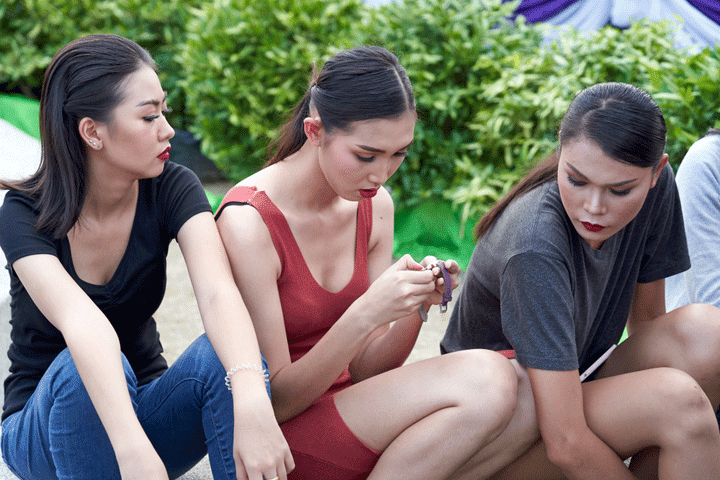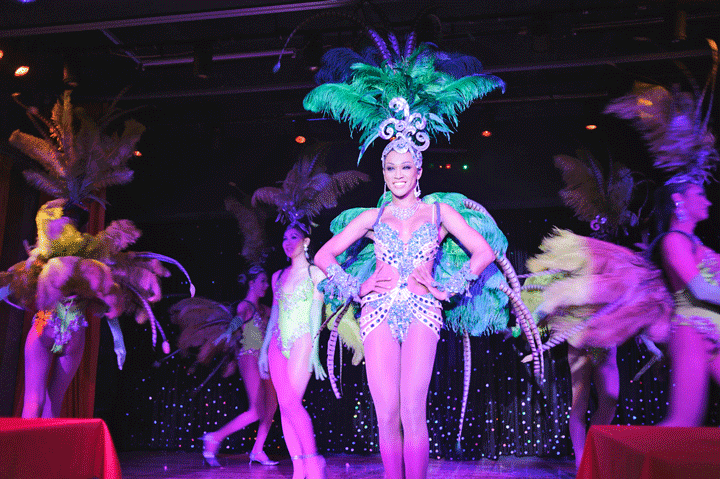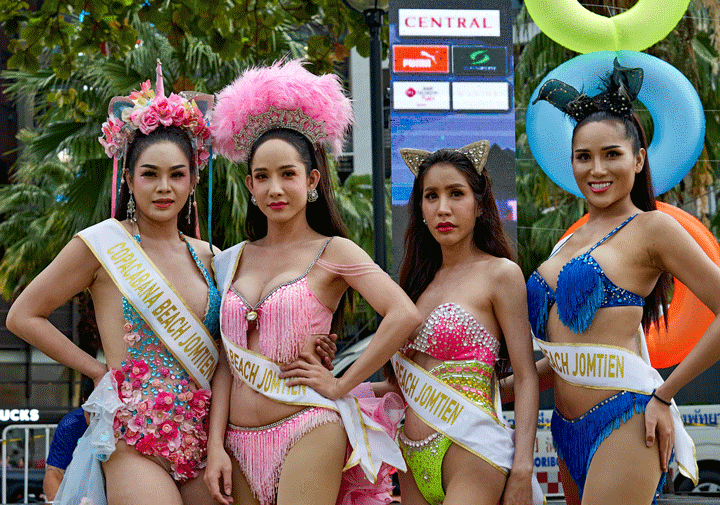
(Matt Hahnewald / Shutterstock.com)
Kathoey, ladyboys, drag queens, gays and other gender-related things, usually referred to as LGBT, play a prominent, romantic and almost dominant role in the foreign view of Thai life. Close your eyes and conjure up the image of a kathoey. Then google 'kathoey in Thailand' and you will see that they are all beautiful, young and happy. Almost always either partially undressed or dressed in fantastically lavish and beautiful robes. The East as an exotic and erotic dream.
But is this really true? That doubt led me to investigate this phenomenon in more detail, focusing mainly on facts and opinions that originate in the Thai community itself. Why is that role so visible? What about the proverbial tolerance of the Thais in this regard? I then mainly talk about the kathoey phenomenon, but take some side roads here and there.
What does kathoey mean?
Sexual orientation is about what gender someone is sexually attracted to, while gender identity is about the gender someone identifies with. Transgender people can therefore be very different in their sexual orientations, just like cisgender people.
The word กะเทย kathoey comes from Khmer and means intersex (or hermaphrodite: having both sex characteristics to a greater or lesser extent) and homosexual. In the Thai context, the meaning later moved more towards men who dressed and behaved femininely without a clearly stated judgment about their gender identity or sexual preference. Since the middle of the last century, the meaning of kathoey in Thai society has come to mean 'transgender', and more specifically male-to-female transgender, possibly under the influence of Western ideas. Another Thai term is: สาวประเภทสอง sao praphet song, literally 'women of the second kind'. A commonly used term that is really only very negative: ตุ๊ด, 'toot' with a high pitch, probably from the movie 'Tootsie'.
In everyday speech, however, men who, for whatever reason, behave in a feminine way are often portrayed in the gaze of the viewer as jovial, or more offensively or reproachfully, as kathoey. Some kathoey have embraced this term but most prefer to be called something else.

(Sergey Colonel / Shutterstock.com)
How many kathoey are there in Thai society?
Because kathoey are very visible in Thai society it is often assumed that there are many, much more than in other countries. That turns out not to be the case. If you take a very broad definition of transgender, it is around 0.3% in all societies worldwide. The number of trans people who are actually engaged in gender reassignment is much less, but does not differ that much between countries.
The idea that there are a lot of kathoey in Thai society has prompted much research into its cause. We know that in ancient Siam, say before 1930, Western visitors found it difficult to distinguish between men and women. They often had the same stature, hairstyle, clothing and behavior. That changed around 1940 when Western ideas about female and male dress and behavior were introduced, sometimes through legislation. We also know that in the 19e century and some later women's roles were fulfilled by men. But the question is whether these cases were real precursors to the kathoey event.
I think the differences in gender identity and sexual orientation don't differ that much around the world. However, their cultural expression and any repression, tolerance or acceptance over time are markedly different.
The kathoey in Thai society. Degree of tolerance and acceptance
It is right to say that the tolerance, and the degree of tolerance, for kathoey and other sexual orientations is quite high in Thailand, especially compared to the surrounding countries.
But that is by no means all. To tolerate means to put up with something that you actually disapprove of or find annoying. 'I tolerate my neighbour's noise, very annoying but I don't do anything about it, never mind'. When Thais are asked how they feel about kathoey, 'funny' comes first, followed by 'strange' and a smaller group calls them 'repulsive'. They are always striking.
Acceptance, acceptance and equal treatment is something completely different, and that is what is lacking in Thailand, although there has been some improvement in recent decades. A number of examples.
Relationships: Eight hundred kathoey gave their opinion in 2012. 15% were no longer accepted into the family and rejected, 8% were conditionally accepted. 13% were no longer allowed to live at home. 14% experienced verbal and 2.5% physical violence. 3.3% were sexually assaulted by friends. Outside the family circle, these figures are two to three times higher.
Military service: Until 2006, katoey were exempted during the examination of conscripts because of a 'serious mental disorder', since then the annotation has been 'disease that cannot be cured within thirty days'. Such a designation can haunt a person for a lifetime. During the conscription, there are sometimes situations where the sexual activities of kathoey or homosexuals have to be mocked erotically by the conscripts.
In 2006, Samart 'Namwan' Meecharoen filed a lawsuit against the Ministry of Defense because her Sor Dor 43 form, which granted her exemption from military service, stated that she suffered from a 'permanent mental disorder'. In 2011, the court ruled and stated that those terms were 'incorrect and illegal'.

(Sorbis/Shutterstock.com)
Education: Pupils and students with a certain gender identity often experience teasing. Lecturers are sometimes disdainful about this group. Many schools and colleges require kathoey to wear the male uniform even though they already identify as female.
Work situation: This is perhaps where the biggest problems arise. With a few exceptions, kathoey cannot get a job in the formal sector. There is an opinion in education that they are not a good role model. Many therefore work in the informal sector, more in the entertainment industry and as sex workers. In prostitution (illegal in Thailand) the police often have an extra focus on ladyboys.
Thirty-three-year-old Pitaya Wong-anuson was denied her due promotion at a pharmaceutical company because management feared that as a trans woman with a passport that listed "male" as her gender, she would not be able to travel internationally.
Soap operas: In the daily and much-watched soap operas on television, the regularly performed kathoey almost always play a role as childish pranksters who should not be taken seriously.
Healthcare: None of the problems associated with gender identity or gender reassignment, such as psychological counseling, hormone therapy and surgery, are reimbursed in Thailand's three health care systems.
The Buddhist view: In Buddhism, sexual identity and preference should not matter because earthly concerns should be abandoned. However, the practice is different. In ancient Buddhist scriptures, transgender people only appear where a woman changes into a man in order to become enlightened. Also in the 227 rules of the monks' discipline, the vinaya, the male-female distinction plays an important role. A common Buddhist school of thought explains certain sexual activities as "deviations" that testify to bad karma gained from wrong sexual acts in past lives.
In May 2013, Sorrawee “Jazz” Nattee was ordained as a full-fledged monk as only men can do in Thailand. That was special because Jazz had spent most of her life as a woman. In addition, she won the 2009 Miss Tiffany Universal Transgender Election that takes place annually in Pattaya. Jazz had once received breast implants but no further transgender surgery.
After his initiation as a monk at Liab Temple in Songkhla, Jazz, now going by the monastic name of Phra Maha Viriyo Bhikku, stated that he entered the Miss Tiffany pageant at the time at the insistence of his parents and that he now wanted to gain merit for them. He had studied the Dhamma for many years and now wanted to remain a monk for the rest of his life.
The abbot of the temple pointed out that after the necessary removal of the breast implants, Jazz was now 100 percent male, both mentally and physically.

(Sergey Colonel / Shutterstock.com)
Gender reassignment surgery
Nowadays, there are 2-3 gender reassignment operations per day in Thailand spread over six hospitals. But let's also look at how those people are divided by nationality and year.
1984-1990 Thai 95% foreigner 5%
2001-2005 Thai 50% foreigner 50%
2010-2012 Thai 10% foreigner 90%
As noted above, all gender-related medical expenses are not reimbursed within the three Thai health care systems.
Gender reassignment surgeries are expensive, although a lot cheaper than abroad. Breast surgery costs between 120 and 000 baht and genital surgery between 180.000 and 250.000 baht. Many kathoey report working in the sex industry in hopes of earning enough money for surgery.
Some people in Thailand earn good money from this, but the Thai trans people are completely abandoned.
Conclusion
Within the Thai community, kathoey and many other gender-related issues are fairly well tolerated. But real acceptance is still a long way off and discrimination is still rampant. Better legislation is a prerequisite.
Below is a link to my main source. A long and detailed but extremely fascinating and instructive story.
For the more visually oriented readers this video:


Thanks for an enlightening piece, Tino. Acceptance is still a long way off and so kathoey shows during weddings and parties - to earn a bite of rice - will continue to exist for a while.
And all those people in the kathoey shows are all beautiful women and she had to work quite a bit to rehearse all those different pieces.
A kathoey or any changed human being is the same to me.
The only thing I really dislike is that gigantic exaggerated mannerism, which you will not see in any woman.
But yes, as long as they feel happy too.
LOUISE
Habari gani, Louise
That is the problem. There are many more kathoey (male-to-female trans people) who are older, no longer beautiful and who cannot perform. They are put away.
Excellent summary. It is good that it is emphasized that the situation for this group is not at all good as sometimes suggested. Of course, that remains very good compared to many other countries.
Tino, wouldn't the transcription “katheuj” or “katheui” come closer to the correct pronunciation for Dutch readers? “Kathoey” seems more appropriate for the English pronunciation.
For the correct pronunciation for Dutch readers:
กะเทย [kà-theuy] low tone, middle tone.
สาวประเภทสอง [sǎaw prà-phêet sǒng] rising, low-falling, rising.
ตุ๊ต [tóet] high
(I already scolded Tino by email 😉 555 )
And yes: in one sentence it is true in Thailand that true acceptance and equality is still far away, but compared to many other countries, fortunately it is not hell on earth for these people in Thailand. Little by little things will get better. For example, the Registered Partnership bill is a move in the right direction, but a 'marriage status version light' is not yet the same as actually equal status to married hetero couples. And may acceptance also move step by step towards acceptance and respect.
Phew, Rob, it's ตุ๊ด and not ตุ๊ต Oh well, who cares, the pronunciation is the same. I don't think many Thais know either.
Well, Kees, don't get me started on transcription. Do you know what "kao" means? Kathoey is simply the most common phonetic representation. But you're right, I should have worded it better. Too bad Rob V. is not on hand.
Kathoey. A non-aspirated -k-, an aspirated -t- (represented by -th-), a short -a- and a long mute -e- sound, as in 'de' but much longer. Oh yes, low tone, mid tone.
I would like to add, however, that most see the word 'kathoey' as pejorative, contemptuous.
Very good article from Tino. Helps revise prejudices and self-developed images. Perhaps it is an idea to make a series of the most common prejudices or misconceptions about the Thai?
Good heavens, Evert-Jan, that's going to be a very long series! A good idea. Maybe I'll do it.
It is also present in Thai Buddhism, just see the Buddha statues where Buddha is depicted with breasts
Do you mean the Laughing Buddha, Ruudje? With those breasts and big belly? That was a Zen monk, a delightful prankster, not a Buddha.
Good article Tino, thank you.
A few years ago I read the book “Ladyboys” by Susan Aldous and Pornchai Sereemongkonpol. That book also makes it clear that being born in 'the wrong body' has been an agony for those people who are interviewed in it. Highly recommended for anyone wanting insight.
I would also like to note that, in connection with job opportunities, I often see ladyboys working behind the counter at the Foodmart near me and I have no idea that they are being teased. And Baan and Beyond (Pattaya) employs a lot of toms, especially in the technical departments. Have those companies arranged a certain acceptance among the staff?
Yes, that's right, maryse. I read that toms, tomboys often work in technical occupations in factories and elsewhere. They are specifically requested and accepted for this purpose.
Great, Maryse. I just looked at that book 'Ladyboys' and found a story about one of the writers Susan Aldous. I like these kinds of stories.
https://www.smh.com.au/world/light-relief-from-the-lady-known-as-angel-20081116-gdt32m.html
I can not resist. Searched a little further. A review of this book Ladyboys:
https://dawnabroadbackup.wordpress.com/2011/08/01/book-review-ladyboys-the-secret-world-of-thailands-third-gender/
Quotes:
Life beyond the shows for Thailand's Ladyboys, however, is not as glamorous and cheerful as it seems.
Most of the big families see ladyboys as a disgrace, a bad karma. Society doesn't help either. Children, especially, can be very harsh towards people who “look” different. And even when it is time to find a job, some employer will simply reject the application because of their status as Ladyboys.
Far from what it seems in the surface, Thailand's society still far from accepting ladybI would recommend this book to anyone willing to see Thailand's ladyboys beyond the entertainment business, and those looking at inspiration to go through life.
Thank you Tino, nice article. It hadn't occurred to me to look her up on the internet and now I'm glad I know more about her. A special woman!
Kathoey or Ladyboy as they like to call themselves and their work. However, I know plenty who have very formal jobs here in Bangkok in universities. And even very responsible formal jobs. The ones I've known for almost 10 years. And never worked in nightlife. Everyone has their own life of course and I respect that very much.
Anyway, I think it's a beautiful girl/boy. Been to Thailand many times and seen many beautiful and ugly Katoy. Often it is a feast for the eyes.
I have been in a homosexual relationship with a Thai man for almost two years now. No problem in his family and environment. Fortunately, walking hand in hand through the streets of Bangkok has never resulted in a crooked look.